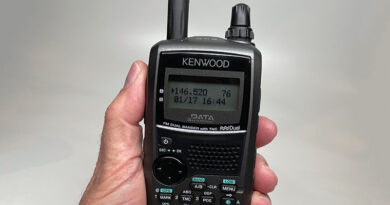Did You Know?
By Ron Hranac
Earlier this year SCTE·ISBE’s Rocky Mountain Chapter instituted a new program called Last Thursday, a monthly meet-up on the last Thursday of every month. The meetings are open to all chapter members, guests, and those interested in SCTE·ISBE, and provide a fun and social way to participate with the chapter. Each Last Thursday starts at 5:00 p.m. with about 25 minutes for attendees to visit while enjoying a light snack. Following that is a 30 minute to one hour technical presentation, often accompanied by hands-on training related to the presentation. Optional after-meeting time is available for informal ask-the-experts discussions. I spoke at the March 2018 Last Thursday event, covering a fun topic called “Did You Know?”
My “Did You Know?” presentation defined some common industry terms, occasionally poked good-natured fun at misuse of a few of those terms, clarified misconceptions, and provided a high-level overview of a variety of technical topics. Here are some of the terms I discussed in the March Last Thursday event.
Did you know BER is an abbreviation for bit error ratio?
Yes, we often call it bit error rate, but bit error rate is the reciprocal of bit error ratio. Our test instruments actually report bit error ratio. More on bit error rate in a moment.
BER is the ratio of errored bits to the total number of bits transmitted, received, or processed over a defined amount of time. Mathematically, BER = number of errored bits/total number of bits. Here’s an example.
Let’s say that 1,000,000 bits are transmitted, and three bits out of the 1,000,000 bits received are errored because of intermittent interference between the transmitter and receiver. BER in this example is calculated by dividing the three bits received in error by the 1,000,000 transmitted bits:
BER = 3/1,000,000 = 0.000003
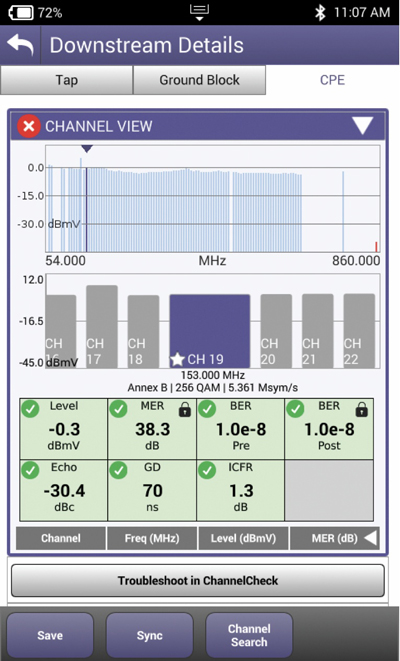
“Wait a minute,” you say. “We don’t state BER like that.” Indeed we don’t. BER is usually expressed in scientific notation format, which is a mathematical shorthand way of expressing very large or very small numbers. Here, 0.000003 in scientific notation is 3×10-6, which also can be written as 3×10^-6 and 3.0E-6. The last one is the way many test instruments report bit error ratio. (Note: The “^” and “E” simply mean the number following them — in this case “-6” — is an exponent.)
What about bit error rate? The bit error rate in this example is 1/(3×10-6) = 333,333.33, which means errors occur at the rate of one errored bit in every 333,333 bits received.

Did you know CLI is an abbreviation for cumulative leakage index?
CLI is NOT the same thing as signal leakage! CLI is a mathematical snapshot of a cable system’s overall signal leakage performance at a given point in time. One cannot detect, test, or measure CLI directly; one must measure signal leakage in order to calculate CLI. The Federal Communications Commission does reference a “CLI test,” but that is a process in which leakage is measured and a CLI figure of merit calculated in accordance with Part 76 of the FCC Rules. More information about CLI is available on the Commission’s web site, including a link to a handy on-line CLI calculator: https://www.fcc.gov/media/engineering/basic-signal-leakage-performance-report-form-320.
Did you know the cable channels in North American (and elsewhere) networks are
CTA channels, not EIA channels?
The standard that defines 6 MHz-wide channels in cable networks is called CTA-542-D, where CTA is an abbreviation for the Consumer Technology Association. In the past the channels have been variously called IS-6, EIA/NCTA, EIA, and most recently CEA channels. After the Consumer Electronics Association changed its name to the Consumer Technology Association, the standard’s name was changed, too, so CTA channels they are.
Did you know dBmV — an abbreviation for decibel millivolt — expresses power in terms of voltage?
The “mV” appended to “dB” causes a lot of confusion because the decibel, by definition, is used to express the ratio of two power levels (see https://broadbandlibrary.com/wise-and-mighty-decibel/). Signal level in dBmV is technically the ratio, in decibels, of that signal level to a specific reference. The reference is 0 dBmV, which is the power produced when a voltage of 1 millivolt (mV) root mean square is applied across a characteristic impedance of 75 ohms, in the case of the cable industry. That is, 1 mV in a 75 ohm impedance is 13.33 nanowatts (nW), which we call 0 dBmV.
Did you know DOCSIS®is an abbreviation for Data-Over-Cable Service Interface Specifications?
That’s “Service,” not “System.” Also note the two hyphens, and the plural “Specifications.” Each version of DOCSIS includes several individual specifications, such as MAC and Upper Layer Protocols Interface Specification (MULPI), Cable Modem Operations Support System Interface Specification (OSSI), and Physical Layer Specification (PHY).
Did you know MSO is an abbreviation for multiple system operator?
I sometimes see the abbreviation spelled out as multi-system operator, multiple service operator, and multi-service operator, but those are incorrect. “MSO” is a corporate entity such as Charter or Comcast that owns and/or operates more than one cable system. It’s not a generic abbreviation in the same sense that, say, POTS (plain old telephone service) is, but the abbreviation is commonly used that way. A local cable system is not an MSO — although it might be owned by one — it’s just a cable system. All MSOs are cable operators, but not all cable operators are MSOs. That last point is important: If a company owns, say, just one cable system, that company is a cable operator, but is not an MSO.
Did you know QAM is an abbreviation for quadrature amplitude modulation, and is a type of modulation, like amplitude modulation (AM) or frequency modulation (FM)?
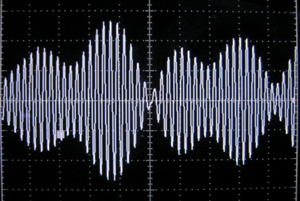
Technically it’s incorrect to call a QAM signal or a QAM modulator a “QAM.” Yes, it seems that everyone does so, but that’s really no different than calling an FM signal or an FM broadcast transmitter a “FM.” Let’s see, would we pronounce that “foom”?
Did you know SC-QAM is an abbreviation for single carrier quadrature amplitude modulation?
I occasionally hear people call it single channel quadrature amplitude modulation, but that’s incorrect. The term came about after the introduction of DOCSIS 3.1, because the orthogonal frequency division multiplexing (OFDM) used in D3.1 deployments is a multi-carrier per channel transmission technique. DOCSIS 3.0 (and earlier) and digital video QAM signals are single carrier per channel.
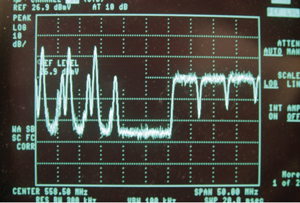
As you can see, some of the terminology we use in cable isn’t always what it seems at first glance. There are many more industry terms that can be downright confusing, and hopefully this brief look at some of them helped to clarify things a bit.
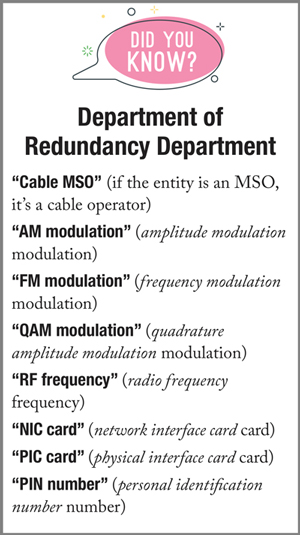
 Ron Hranac
Ron Hranac
Technical Leader,
Cisco Systems
Ron Hranac, a 45-year veteran of the cable industry, is Technical Leader for Cisco’s Cable Access Business Unit. A Fellow Member of SCTE, Ron was inducted into the Society’s Hall of Fame in 2010, is a co-recipient of the Chairman’s Award, an SCTE Member of the Year, and is a member of the Cable TV Pioneers Class of ’97. He received the Society’s Excellence in Standards award at Cable-Tec Expo 2016. He has published hundreds of articles and papers, and has been a speaker at numerous international, national, regional, and local conferences and seminars.
Shutterstock.com


